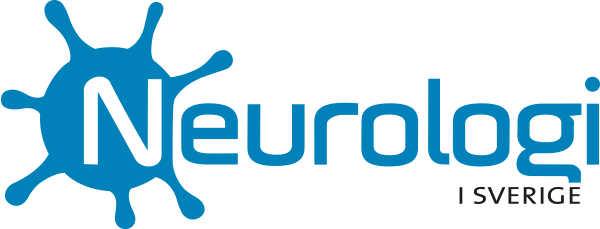Dosering av natalizumab var sjätte vecka istället för var fjärde för personer med skovvis förlöpande multipel skleros
Lancet Neurology publicerar resultat från fas 3b NOVA-studien som utvärderar effekten av dosering av natalizumab var sjätte vecka för personer med skovvis förlöpande multipel skleros.
- Resultaten av NOVA-studien visar att natalizumab IV som administreras var sjätte vecka kontrollerar sjukdomsaktiviteten hos MS-patienter som bytte från den godkända doseringsregimen var fjärde vecka
- Säkerhetsresultaten överensstämde med den redan kända säkerhetsprofilen för natalizumab IV
- Europeiska läkemedelsmyndigheten har nyligen lagt till effekt- och säkerhetsdata för IV administrering var sjätte vecka i produktresumén för TYSABRI™ (natalizumab) i EU
Nyheten på engelska:
Biogen Inc. (Nasdaq: BIIB) can announce that data from the NOVA Phase 3b study evaluating the efficacy of every six-week (Q6W) dosing with 300 mg natalizumab IV were published in The Lancet Neurology. The data show that Q6W dosing with natalizumab controls multiple sclerosis (MS) disease activity in patients with relapsing-remitting MS who switched to Q6W after at least one year of disease stability on the approved every four-week (Q4W) IV dosing schedule.
“The NOVA trial is the first prospective study evaluating every six-week dosing of natalizumab in patients with relapsing-remitting MS, providing important information about the consistent effect of every four- or six-week dosing,” said John Foley, M.D., Rocky Mountain MS Clinic and lead author of The Lancet Neurologypublication. “These results build upon the retrospective safety analyses of the TOUCH Prescribing Program, which found that extended interval dosing of approximately every six weeks with IV natalizumab is associated with significantly lower risk of progressive multifocal leukoencephalopathy (PML) than the every four-week dosing schedule, to provide a more comprehensive understanding of the every six-week dosing regimen for natalizumab.”
Topline results from the NOVA study were first announcedin August 2021, and new data published in The Lancet Neurology include additional information on baseline characteristics of the trial, as well as safety outcomes.
“The publication of peer-reviewed NOVA data in The Lancet Neurology highlights Biogen’s commitment to pursue scientific research and innovation on behalf of the MS community, affirming the real-world evidence reports from the clinical community about every six-week dosing of natalizumab1,2,3,” said Christina Gip, medical director, Biogen in Sweden. “Biogen will continue to evaluate the data generated by the NOVA study to further advance our understanding of natalizumab, an MS therapy with 15 years of market experience resulting in more than one million patient years of experience5.”
The NOVA study (NCT03689972) was designed to assess the efficacy of Q6W dosing with natalizumab IV administration following analyses from the TOUCH (Tysabri Outreach: Unified Commitment to Health) Prescribing Program, which showed that extended interval dosing (approximately every six weeks) was associated with a significant 87 percent reduction (hazard ratio 0.127; P<0.0001) in the probability of PML in comparison to the approved Q4W dose.4 NOVA was a randomized, controlled, prospective, open-label, multinational trial including participants diagnosed with MS aged 18-60 years who had been treated with the approved dose of natalizumab IV (300 mg every four weeks) with no relapses for at least 12 months. Study participants (n=499) were randomly assigned across 89 study sites in 11 countries to either receive Q6W dosing (n=251) or continue treatment with Q4W dosing (n=248). The primary endpoint was the mean number of new or newly enlarging T2 hyperintense lesions at week 72. Secondary study clinical endpoints were assessment of the time to first relapse, annualized relapse rate (ARR) at week 72 and time to 24-week confirmed disability worsening (CDW) (defined as an increase of ≥1 point from a baseline EDSS score of ≥1 or an increase of ≥1.5 points from a baseline EDSS score of 0, confirmed ≥24 weeks after the initial increase).
There was a numerical but not statistically significant difference in the primary efficacy endpoint between the Q4W and Q6W treatment arms, the mean number of new or newly enlarging T2 hyperintense lesions at week 72 of 0.05 (Q4W) and 0.20 (Q6W) (p=0.0755). There were no statistically significant or clinically meaningful differences in secondary endpoints at week 72 between the Q4W and Q6W treatment arms, and disease activity was well-controlled in both arms: annualized relapse rates were low at 0.00010 (Q4W) and 0.00013 (Q6W), with 97.9 percent of patients in the Q4W arm remaining relapse-free compared to 97.2 percent of patients in the Q6W arm.
The safety findings in the NOVA study were consistent with the known safety profile of IV natalizumab, and the incidence of serious adverse events (SAEs) and adverse events (AEs) was similar between the two treatment arms. AEs leading to discontinuation of study treatment were reported by four of 250 (2%) Q6W participants and one of 247 (0.4%) Q4W participants. NOVA was not powered to assess differences in the probability of PML for Q6W and Q4W dosing. The NOVA study protocol includes an open-label extension (OLE) study (NOVA Part 2) assessing the subcutaneous and IV routes of administration of natalizumab Q6W and exploring the long-term efficacy, safety, and tolerability of natalizumab Q6W.
The full manuscript, “Comparison of switching to 6-week dosing of natalizumab versus continuing with 4-week dosing in patients with relapsing-remitting multiple sclerosis (NOVA): a controlled, open-label, phase 3b trial,” is available onlineand will appear in the July print issue of The Lancet Neurology.
In March 2022, the TYSABRITM (natalizumab) Summary of Product Characteristics (SmPC) was updated by the European Medicines Agency (EMA) to include data on the efficacy of Q6W IV dosing from NOVA while maintaining Q4W as the only approved dosing regimen.




